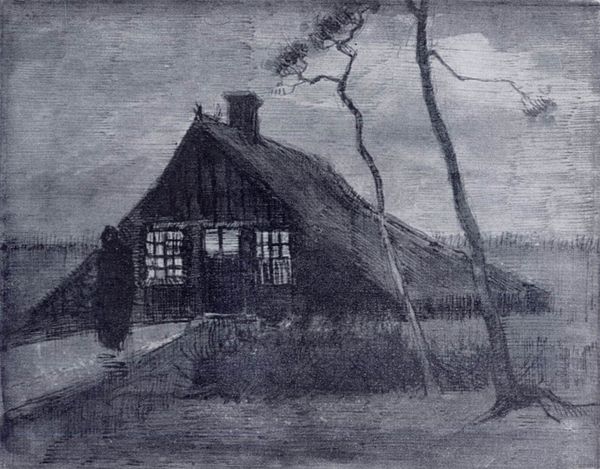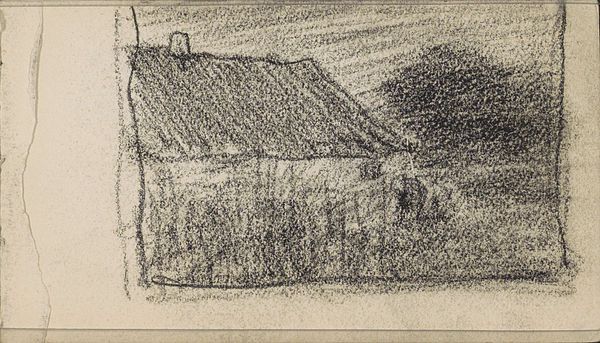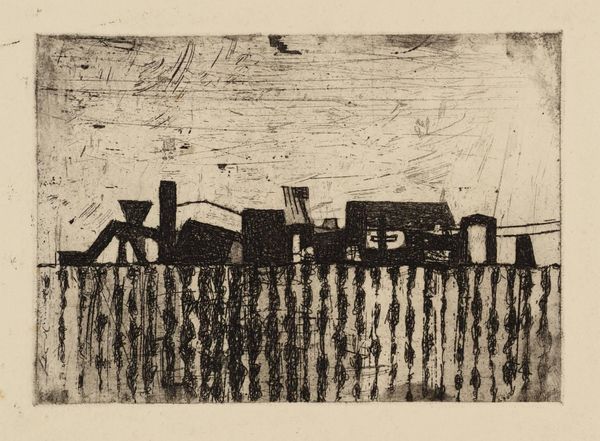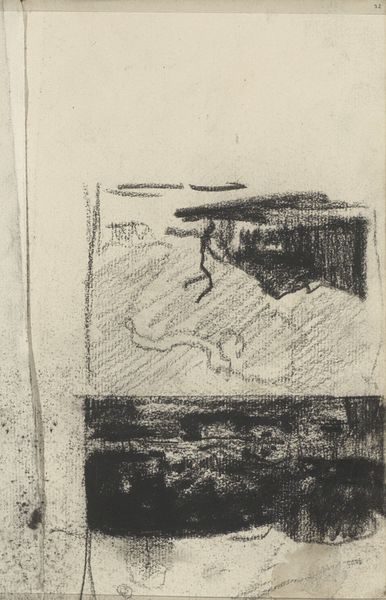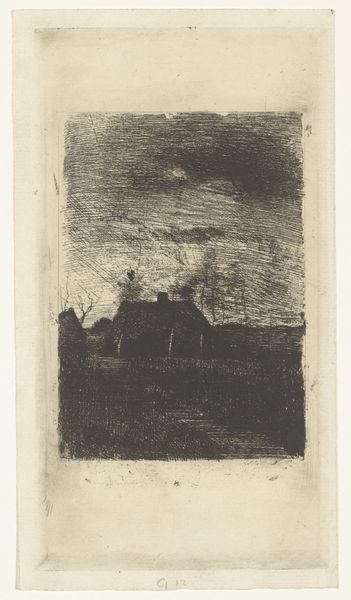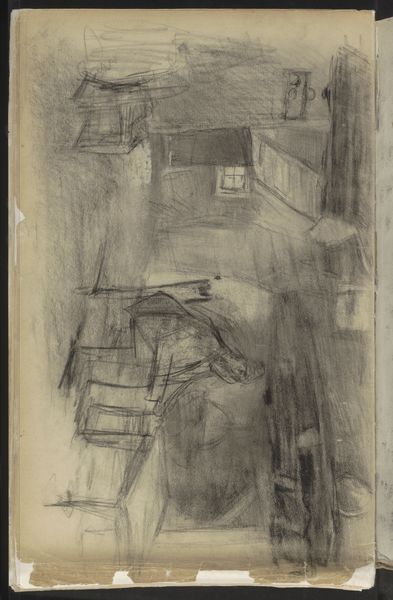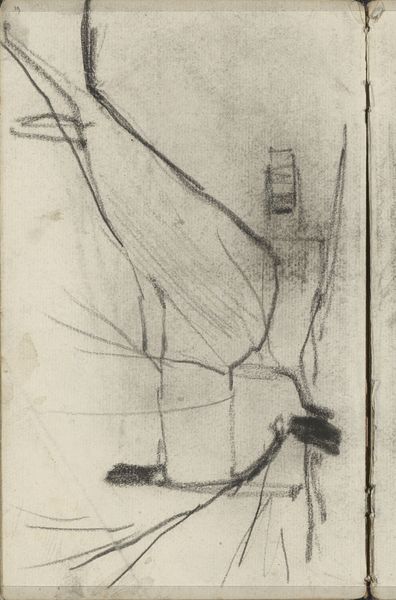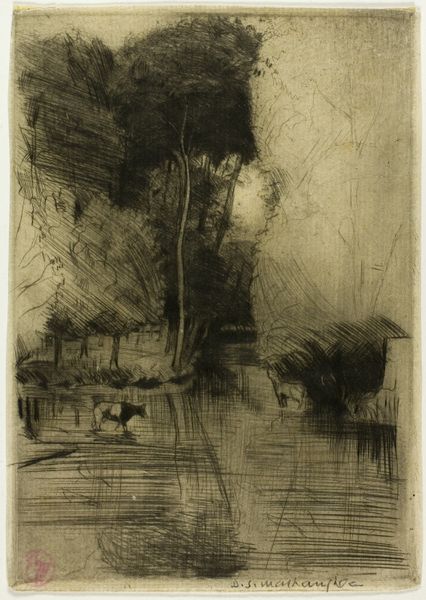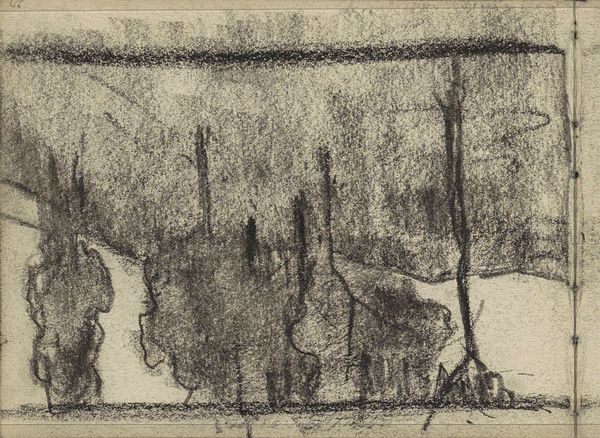
drawing, pencil, charcoal, architecture
#
drawing
#
impressionism
#
landscape
#
pencil
#
charcoal
#
architecture
Copyright: Public domain
Editor: This drawing, "Two Studies of a Cottage" by Vincent van Gogh, made in 1885 using pencil and charcoal, depicts exactly that - two studies of the same cottage. I’m struck by the contrast between the lightness of the upper sketch and the heavy darkness of the lower one. What do you see in this piece? Curator: The duality in the drawing’s composition is compelling. Notice the distinction in the handling of line and tone between the upper and lower registers. The upper study exhibits a delicate linearity, prioritizing an outline. Observe how this contrasts with the lower register. What is the artist investigating here? Editor: Perhaps exploring the same subject under different lighting? The upper one feels like daytime, and the lower one, night. Curator: Precisely. And consider how this shift in illumination alters our perception of form. In the lower register, the deep chiaroscuro not only defines the structure of the cottage, but it also imbues it with an emotive presence absent in the linear sketch above. We must also observe the contrast. Note how Van Gogh positions these divergent modes of representation adjacent to one another on the very same plane. What might that suggest to you about Van Gogh's practice in this study? Editor: It seems like he's deliberately contrasting ways of seeing, almost like he's working through different artistic approaches to depicting a single subject. Curator: Precisely! He presents seeing, analyzing, and interpreting the same form using fundamentally different expressive modes. Through juxtaposing these disparate techniques, he is drawing our attention to his visual language. An exciting thing for any viewer! Editor: This has definitely given me a new appreciation for the details within this drawing! Curator: Indeed! Thinking about an artist's method is fundamental in understanding an artist's greater work.
Comments
No comments
Be the first to comment and join the conversation on the ultimate creative platform.
